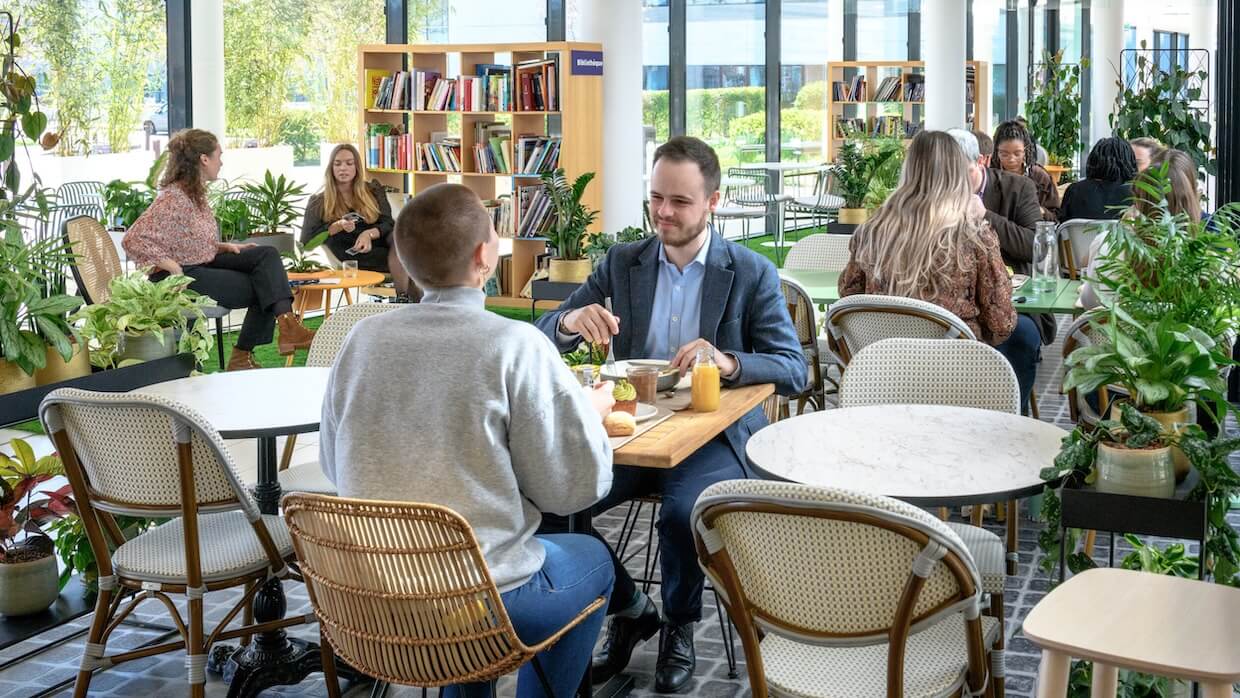Food
The sustainable chef superstars fuelling your day

How can today’s leaders run a cost-effective business while also providing the best employee experience? It’s a question many business leaders are grappling with as they work to balance pandemic recovery with their future growth plans.
Our research shows that most leaders are struggling with the answer. They acknowledge the critical importance of employee engagement, but nearly two-thirds of business leaders (63%) admit that cost-saving and efficiency ultimately take precedence over employee experience when it comes to transformation.
That could be a problem. To attract, engage and retain employees in a hybrid-working world, leaders will need to reconsider how to strike that balance. Because employees are leaving their jobs in vast numbers, and many are walking away because they felt unsupported during the worst of the pandemic. This ‘great resignation’ will be worse for employers that can’t adapt to hybrid working in a way that supports their workforce.
"Job seekers look specifically for employers that have a reputation for cultivating a positive, inclusive, and rewarding culture."
So what exactly can leaders do to establish that equilibrium between profitability and employee experience?
Cost-cutting and other ways of improving profitability are often calculated and evaluated in isolation. Reducing headcount, switching suppliers and closing sites, for example, might reduce expenditure, but they have knock-on effects.
Gartner data shows that cost-cutting measures “almost always have a negative impact on individuals’ employee experience” and reduce employee engagement and productivity.
This should ring alarm bells for employers: low engagement and productivity carry their own costs. For instance, data from Perkbox shows that disengaged employees cost the UK economy £340bn every year in training and recruitment costs, sick days and low productivity, creativity and innovation.
So the benefits of savings measures should not be viewed in isolation. Leaders also need to consider their wider cost to the workforce.
The answer lies in creating a culture that’s driven by both purpose and vision. “Employee engagement and loyalty levels ebb and flow based on whether they trust their employer, whether a workplace culture is perceived as positive or negative, or if there’s an acceptable work-life balance,” says Moira Alexander.
Sodexo’s CEO of Corporate Services Worldwide Sunil Nayak says that taking this approach can turn a vicious cycle into a virtuous one. “For me, profits and employee engagement are not two separate things, and we have to stop looking at them like that,” he says. “They need to be integrated into the business. A company’s goals need to take a holistic approach and focus on financial performance and performance in other areas.”
 Companies in today’s world need to be very clear about what their mission is, what their ambition is, who they want to be and where they want to go. For leaders, ensuring that every decision reflects the company purpose is key to keeping employees engaged – and this benefits the bottom line.
Companies in today’s world need to be very clear about what their mission is, what their ambition is, who they want to be and where they want to go. For leaders, ensuring that every decision reflects the company purpose is key to keeping employees engaged – and this benefits the bottom line.
During the pandemic, for instance, pharmaceutical companies came together with a common purpose – to produce a vaccine – and this had an impact across the globe. This is a great example of real purpose triggering a different leadership approach in order to overcome a major challenge. It was also, of course, financially beneficial for those companies.
Having a strong sense of purpose will also help companies to attract and retain top talent, says Alexander. “Many employees today – especially Millennials and Generation Z – place significant value on how well they are treated and supported,” she says. “For them, this is key to selecting and remaining with an employer. They look specifically for employers that have a reputation for cultivating a positive, inclusive and rewarding culture.”
Nayak and Alexander agree that trust is crucial. “Leaders will need to develop a greater sense of trust in their employees and provide the tools needed to increase productivity and the chance for successful outcomes,” says Alexander.
And Nayak says that trust is a stabilizing force for employees in times of disruption and uncertainty. “We’re in an unstable world,” he says. “And we’re all looking for reassurance about the future.”
 The employee engagement playbook has been ripped up over the past two years. The hybrid-working model is changing how many employees work and what they want from their employers. In parallel, it has created a new and unexpected cost center for employers: offices that are not at capacity.
The employee engagement playbook has been ripped up over the past two years. The hybrid-working model is changing how many employees work and what they want from their employers. In parallel, it has created a new and unexpected cost center for employers: offices that are not at capacity.
Sylvia Metayer, Sodexo’s Chief Growth Officer, says this will be a point of tension for leaders. “There are millions of square feet of office space currently on companies’ balance sheets that need to be used,” she says. “But what are they going to do with that huge asset?
It’s a major concern for today’s leaders, but Sodexo’s Nayak says this is the perfect opportunity for purposeful leadership to come to the fore.
“When you work in a hybrid environment, you haven’t got people physically coming together,” he says. “But what really creates a community? It’s about having a clear ambition and a vision that people want to be a part of. And that’s why it’s a lot more important for companies to have a stronger and more explicit purpose: purpose helps people create a community.”
Alexander suggests leaders should take training to make sure they are prepared to support their employees in a hybrid model. “Keeping pace with the speed of change and employee expectations will require leaders to adjust their own expectations and mindsets to become more flexible and patient,” she says.
If businesses do want to downsize their office space and save cash, they can invest some of the savings into building the right culture and creating that community.
"In the hybrid world, the dynamics of building culture have changed."
Do you have what it takes to respond to the evolving needs of your workforce? Learn more
This article is part of Sodexo’s ‘Experience Next’ thought leadership series on the work-life transformation.
The sustainable chef superstars fuelling your day

How AI is bringing true personalization to workplace dining

How healthy food unlocks a world of benefits
